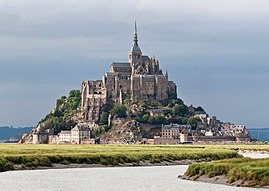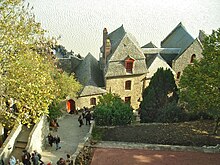___________________________________________________________________________
Note: I would like to share with you through these few words, photographs and hyperlinked websites, a 3 Dimensional experience as though you were actually there with us. To see each photograph in a very clear way as though you were with us by clicking the right side of your cursor. It should say: ‘Open in a new window’ or ‘Open image in a new tab‘. Look at the tab on the edge of the upper screen. Each photograph will come up very clear. You are an arm chair traveller with us.
If you would also like to see the post in a larger or smaller size, I suggest you follow this procedure: If you right-handed, with your left hand, press down continuously on the Control Function Key with your left hand and with your right hand, move the little cursor wheel either forwards or backward to make the text in the post larger or smaller.
_________________________________________________
The Island and The Sea …. Brief Description
Perched on a rocky islet in the midst of vast sandbanks exposed to powerful tides between Normandy and Brittany stand the ‘Wonder of the West’, a Gothic-style Benedictine abbey dedicated to the archangel St Michael, and the village that grew up in the shadow of its great walls. Built between the 11th and 16th centuries, the abbey is a technical and artistic tour de force, having had to adapt to the problems posed by this unique natural site.
| Le Mont Saint-Michel | |||||||||||||||||||||||||||||
|---|---|---|---|---|---|---|---|---|---|---|---|---|---|---|---|---|---|---|---|---|---|---|---|---|---|---|---|---|---|
HistoryThe original site was founded by an Irish hermit who gathered a following from the local community. Mont Saint-Michel was used in the sixth and seventh centuries as an Armorican stronghold of Gallo-Roman culture and power until it was ransacked by the Franks, thus ending the trans-channel culture that had stood since the departure of the Romans in 460. From roughly the fifth to the eighth century, Mont Saint-Michel belonged to the territory of Neustria, and in the early ninth century was an important place in the marches of Neustria. Inside the walls of Mont Saint-Michel:
Before the construction of the first monastic establishment in the 8th century, the island was called Mont Tombe (Latin: tumba). According to legend, the archangel Michael appeared in 708 to Aubert of Avranches, the bishop of Avranches, and instructed him to build a church on the rocky islet. Aubert repeatedly ignored the angel’s instruction until Michael burned a hole in the bishop’s skull with his finger.[11] Unable to defend his kingdom against the assaults of the Vikings, the king of the Franks agreed to grant the Cotentin peninsula and the Avranchin, including Mont Saint-Michel, to the Bretons in the Treaty of Compiègne (867). This marked the beginning of the brief period of Breton possession of the Mont. In fact, these lands and Mont Saint-Michel were never really included in the duchy of Brittany and remained independent bishoprics from the newly created Breton archbishopric of Dol. When Rollo confirmed Franco as archbishop of Rouen, these traditional dependencies of the Rouen archbishopric were retained in it. The mount gained strategic significance again in 933 when William I Longsword annexed the Cotentin Peninsula from the weakened Duchy of Brittany. This made the mount definitively part of Normandy, and is depicted in the Bayeux Tapestry, which commemorates the 1066 Norman conquest of England. Harold Godwinson is pictured on the tapestry rescuing two Norman knights from the quicksand in the tidal flats during a battle with Conan II, Duke of Brittany. Norman ducal patronage financed the spectacular Norman architecture of the abbey in subsequent centuries. Bayeux Tapestry scenes 16 and 17: William and Harold at Mont Saint-Michel (at top center); Harold rescuing knights from quicksand. In 1067, the monastery of Mont Saint-Michel gave its support to William the Conqueror in his claim to the throne of England. This he rewarded with properties and grounds on the English side of the Channel, including a small island off the southwestern coast of Cornwall which was modeled after the Mount and became a Norman priory named St Michael’s Mount of Penzance.
Cannons abandoned by Thomas de Scales, 7th Baron Scales at Mont Saint-Michel on June 17, 1434. As of June 2013, only the second cannon, the one closer to the wall, is on display inside the entrance to the Mont’s outer wall.
During the Hundred Years’ War, the Kingdom of England made repeated assaults on the island but were unable to seize it due to the abbey’s improved fortifications. The English initially besieged the Mont in 1423–24, and then again in 1433–34 with English forces under the command of Thomas de Scales, 7th Baron Scales. Two wrought-iron bombards that Scales abandoned when he gave up his siege are still on site. They are known as les Michelettes. Mont Saint-Michel’s resolute resistance inspired the French, especially Joan of Arc. When Louis XI of France founded the Order of Saint Michael in 1469, he intended that the abbey church of Mont Saint-Michel become the chapel for the Order, but because of its great distance from Paris, his intention could never be realized.
The wealth and influence of the abbey extended to many daughter foundations, including St. Michael’s Mount in Cornwall. However, its popularity and prestige as a center of pilgrimage waned with the Reformation, and by the time of the French Revolution there were scarcely any monks in residence. The abbey was closed and converted into a prison, initially to hold clerical opponents of the republican regime. High-profile political prisoners followed, but by 1836, influential figures—including Victor Hugo—had launched a campaign to restore what was seen as a national architectural treasure. The prison was finally closed in 1863, and the mount was declared a historic monument in 1874. Mont Saint-Michel and its bay were added to the UNESCO list of World Heritage Sites in 1979, and it was listed with criteria such as cultural, historical, and architectural significance, as well as human-created and natural beauty.[3] Abbey designSee also: Mont Saint Michel Abbey
Plan of the mount by Eugène Viollet-le-Duc In the 11th century, William of Volpiano, the Italian architect who had built Fécamp Abbey in Normandy, was chosen by Richard II, Duke of Normandy, to be the building contractor. He designed the Romanesque church of the abbey, daringly placing the transept crossing at the top of the mount. Many underground crypts and chapels had to be built to compensate for this weight; these formed the basis for the supportive upward structure that can be seen today. Today Mont Saint-Michel is seen as a building of Romanesque architecture. Robert de Thorigny, a great supporter of Henry II of England (who was also Duke of Normandy), reinforced the structure of the buildings and built the main façade of the church in the 12th century. In 1204, Guy of Thouars, regent for the Duchess of Brittany, as vassal of the King of France, undertook a siege of the Mount. After having set fire to the village and having massacred the population, he was obliged to beat a retreat under the powerful walls of the abbey. Unfortunately, the fire which he himself lit extended to the buildings, and the roofs fell prey to the flames. Horrified by the cruelty and the exactions of his Breton ally, Philip Augustus offered Abbot Jordan a grant for the construction of a new Gothic architectural set which included the addition of the refectory and cloister.[12] Charles VI is credited with adding major fortifications to the abbey-mount, building towers, successive courtyards, and strengthening the ramparts. |
|||||||||||||||||||||||||||||
|
|||||||||||||||||||||||||||||
 |
|||||||||||||||||||||||||||||
 |
|||||||||||||||||||||||||||||
| Coat of arms | |||||||||||||||||||||||||||||
 |
|||||||||||||||||||||||||||||
|
|||||||||||||||||||||||||||||
|
|||||||||||||||||||||||||||||
| Le Mont-Saint-Michel (pronounced: [lə mɔ̃ sɛ̃ mi.ʃɛl]; English: Saint Michael‘s Mount) is an island commune in Normandy, France. It is located about one kilometer (0.6 miles) off the country’s northwestern coast, at the mouth of the Couesnon River near Avranches. 100 hectares (247 acres) in size, the island has a population of 44 (2009).[1]
The island has held strategic fortifications since ancient times and since the 8th century AD has been the seat of the monastery from which it draws its name. The structural composition of the town exemplifies the feudal society that constructed it: on top, God, the abbey and monastery; below, the great halls; then stores and housing; and at the bottom, outside the walls, houses for fishermen and farmers. Its unique position — on an island just 600 meters from land — made it accessible at low tide to the many pilgrims to its abbey, but defensible as an incoming tide stranded, drove off, or drowned would-be assailants. The Mont remained unconquered during the Hundred Years’ War; a small garrison fended off a full attack by the English in 1433.[2] The reverse benefits of its natural defense were not lost on Louis XI, who turned the Mont into a prison. Thereafter the abbey began to be used more regularly as a jail during the Ancien Régime. One of France’s most recognizable landmarks, Mont Saint-Michel and its bay are part of the UNESCO list of World Heritage Sites[3], and more than 3 million people visit it each year.[4] |
|||||||||||||||||||||||||||||
______________________________________________________________________________
An aerial photograph showing a long line of cars and many buses parked in the Le Mont Saint-Michel carpark.
People out on the sand around Le Mont Saint-Michel. Do these people know that the tides can vary greatly, at roughly 14 meters (46 ft) between high and low watermarks? Popularly nicknamed “St. Michael in peril of the sea” by medieval pilgrims making their way across the flats, (see the photo below) the mount can still pose dangers for visitors who avoid the causeway and attempt the hazardous walk across the sands from the neighboring coast.
…… The generous causeway which has built in recent years to Le Mont Saint-Michel ….. this is in comparison to medieval pilgrims making their way across the flats and calling it “St. Michael in peril of the sea” by …..
________________________________________________________________________________________________________________
For Further References, see the following websites:
http://vinz1966.free.fr/En/Sommaire.htm …… for the following interactive pages: Visit to the Abbey (in three areas …. 1st Level, Intermediate Level and Top Level), History of the Abbey, Chronology, (1200 years), Glossary, Links and References
http://whc.unesco.org/pg.cfm?cid=31&id_site=80
http://en.wikipedia.org/wiki/Mont_Saint_Michel
________________________________________________________________________________________________________________
The Town Before The Abbey ……. the town with shops and cafes which cater for the crowds of people going through the Abbey ….
________________________________________________________________________________________________________________
Exterior Buildings …..
From Wikipedia, the free encyclopedia:
In the 11th century, William of Volpiano, the Italian architect who had built Fécamp Abbey in Normandy, was chosen by Richard II, Duke of Normandy, to be the building contractor. He designed the Romanesque church of the abbey, daringly placing the transept crossing at the top of the mount. Many underground crypts and chapels had to be built to compensate for this weight; these formed the basis for the supportive upward structure that can be seen today. Today Mont Saint-Michel is seen as a building of Romanesque architecture.
…… Visitors to Mont Saint-Michel climbing the many stairs on this mountaintop monastery on this island-mountain …..
________________________________________________________________________________________________________________
The Exterior Garden …….
Mont St Michel Cloister Garden
The Interior Courtyard …… About the garden, we know that various establishment experiences have been tempted in the course of centuries but it seems that problems of waterproofness have always aborted the project. The garden we admire today was built during the restoration of 1965. Suspended between sky and earth, the effect is emphasized by the triple open bay in the west wall, which was probably used, originally, to communicate with the third building of The Merveille that was never built.
….. this is a work of formal art in getting all the fluted columns to be so evenly placed around the cloister garden ….
Trip 4: CHATEAUX de VILLANDRY …. The Gardens on the East Side (Chateau of the Loire Valley) = Post 5
This post is hyperlinked even though it doesn’t look hyperlinked.






